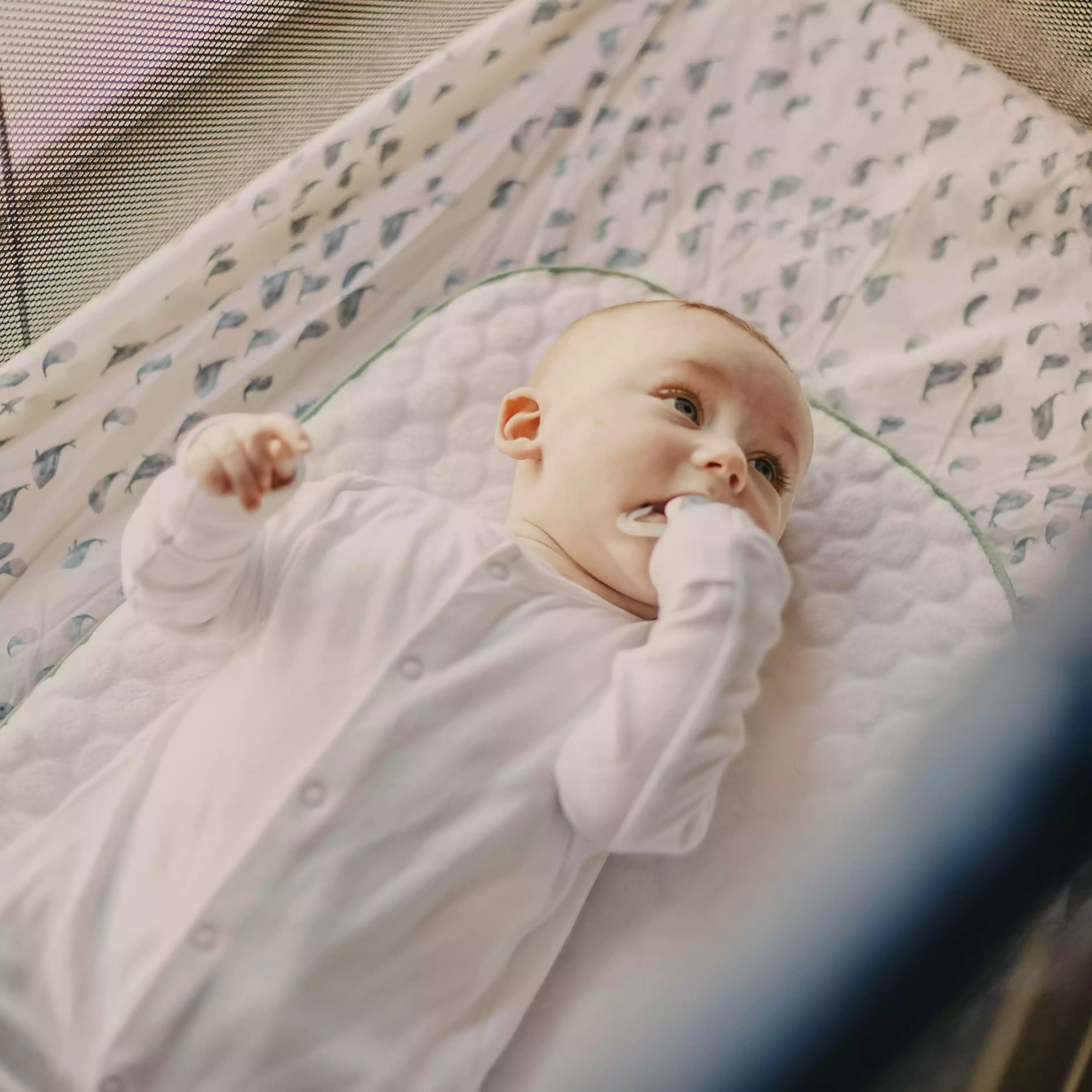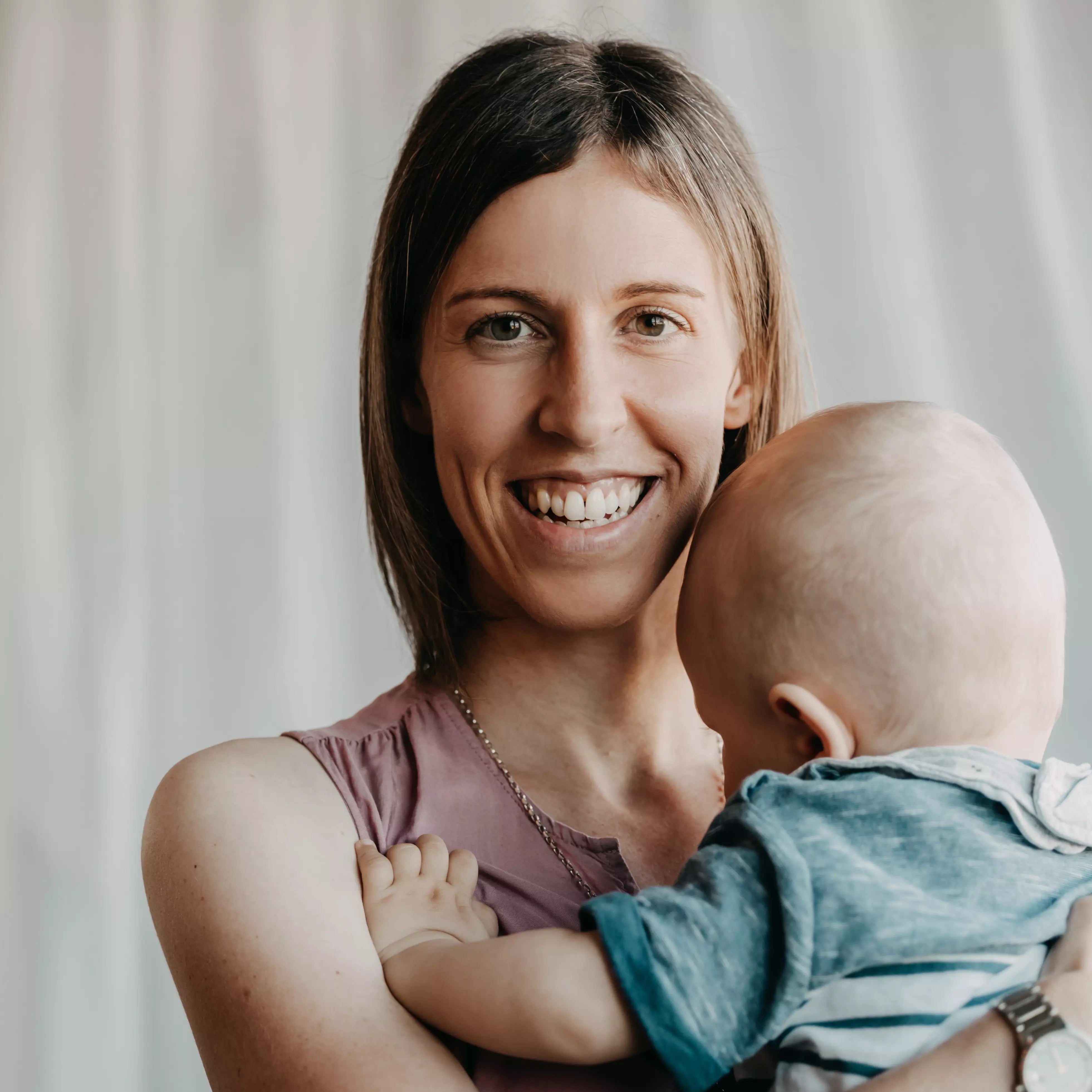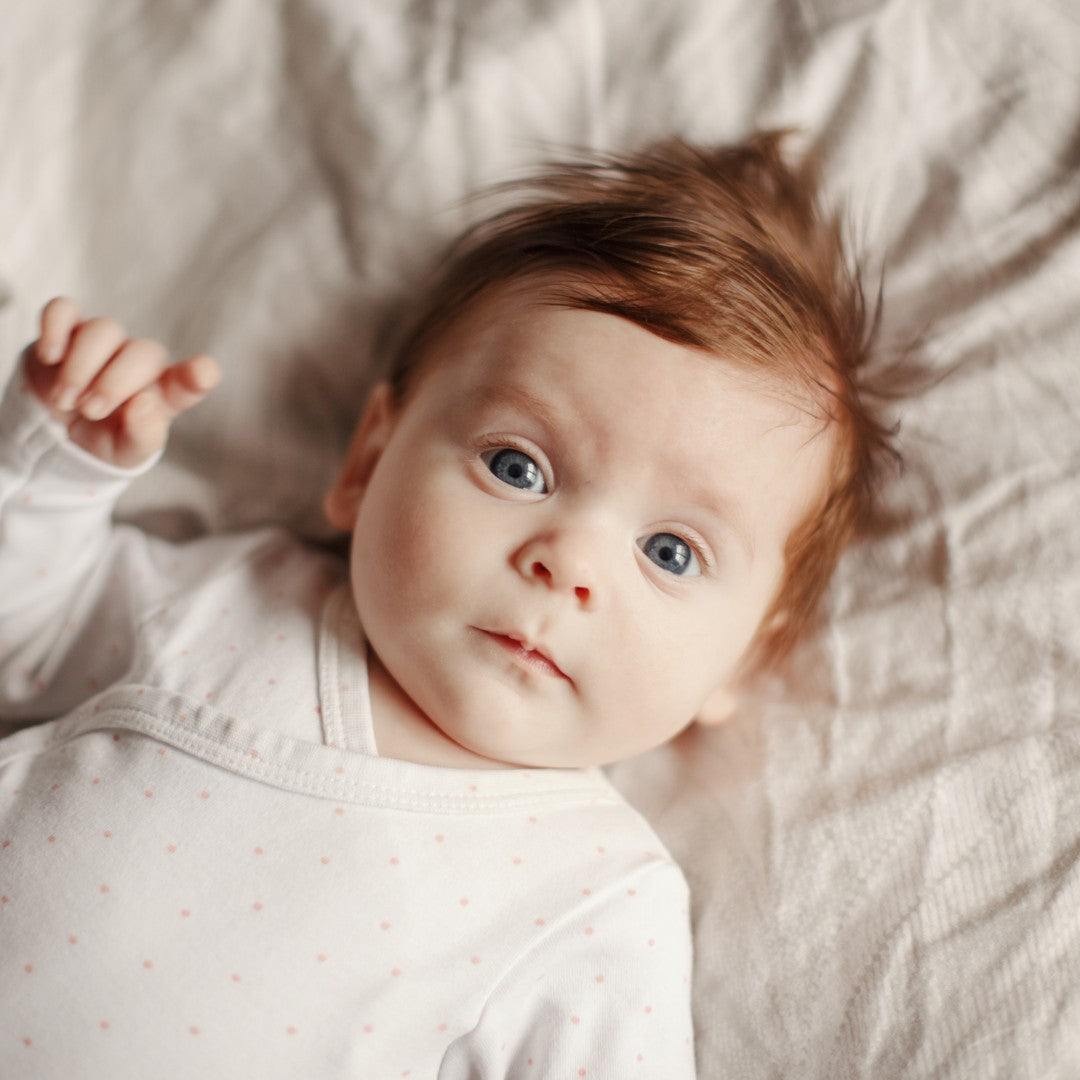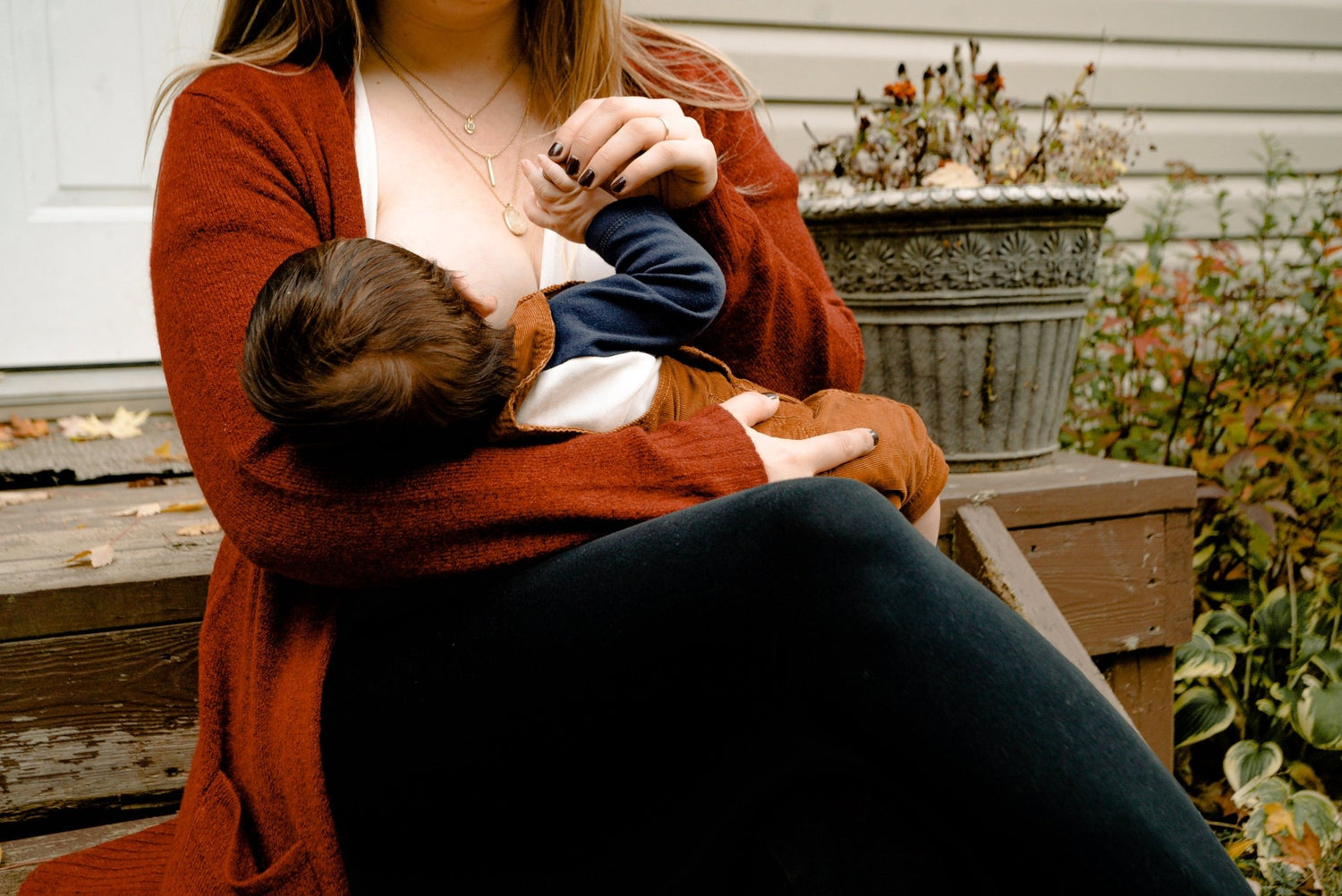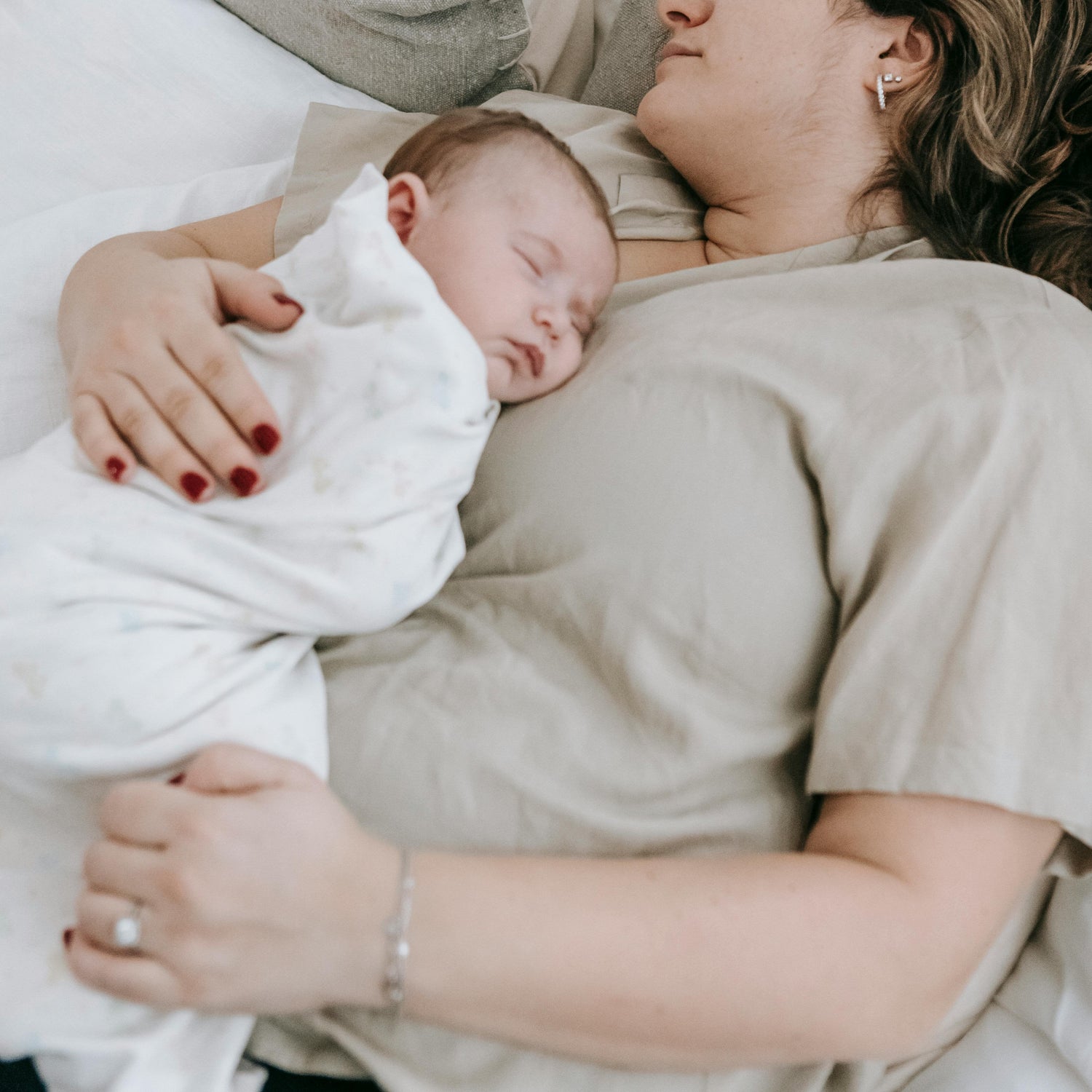The 6 most important tips to ensure your baby sleeps safely
Most parents think about the topic of a “healthy sleeping environment” in great detail during pregnancy. It plays an enormously important role in healthy baby sleep and is an essential factor in preventing sudden infant death syndrome. However, in the flood of information available to (expectant) parents, it is often difficult to keep track of everything, even formally It's not that easy to panic before the child is even born. Especially in the beginning, new mothers are often afraid of doing something “wrong” or overlooking something essential.
That's why we brought you, together with Sabrina von Baby Schlafprofi.de, The 6 most important topics for a safe sleeping environment are briefly and concisely compiled - including a short checklist to print out!
Have fun reading & implementing :)
Table of contents:
|

Tip 1: The right room climate
An optimal sleeping environment includes a healthy room climate.
The optimal sleeping temperature is around 16-18 °C. However, you should ensure that the cot is not placed directly next to the radiator or in direct sunlight.
To one Fresh air supply To ensure this, it is important to ventilate frequently (but only briefly). The window should not be tilted, but should be opened completely. We therefore recommend carrying out short bursts of ventilation on a regular basis rather than permanently exposing the child to drafts. This can be particularly critical in the head area.
The humidity should be in the range of 50 to 65% in the bedroom. If the humidity is too low and the room temperature is too high, the mucous membranes dry out and become irritated and increase the risk of infections and colds.
Tip 2: The right place to sleep
Especially in the first months of life, many mothers rely on the cradle, stroller or bassinet. At the beginning, these offer the advantage that the children usually feel very comfortable and secure in them due to the limited space. However, we advise against letting children sleep permanently in a bassinet, stroller, or cradle, as this can Air circulation is not always sufficiently guaranteed. We recommend putting the child to sleep in a cot or extra bed instead.
The bars on a baby bed ensure good air circulation, which protects the little ones from overheating. The baby mattress should offer ergonomic comfort and also allow good air circulation to prevent heat build-up or the formation of mold.
When purchasing a crib/playpen, please make sure that there are no head trapping points. Your adult fist should just fit between the bars, otherwise there is a risk of your baby getting their head or arms caught in the gap. You should also make sure that there are no cords or ribbons within the baby's reach. Below we answer some of the most frequently asked questions:
2.1. Baby bed in the parents' bedroom?
With regard to the prevention of sudden infant death syndrome, the WHO generally recommends that the child sleeps in its own bed in the parents' bedroom during the first year of life. This means that the child is very close at night and it is also very practical for breastfeeding mothers if the baby bed is within direct reach if possible.
2.2. What do I have to consider with an extra bed?
The extra bed is open on one side and is placed directly next to the parents' bed or attached to the parents' bed. Care should be taken to ensure that there are no gaps between the extra bed and the parents' bed and that the child is not endangered by crawling out to the open side of the bed (e.g. falling out of the parents' bed).
2.3. Can I let my baby sleep in my bed with me?
Yes, but... If parents want to keep their child very close to them at night and share the bed with them, then some “ safety rules ” should be strictly observed:
- No adult who sleeps in your bed should be a smoker.
- There should be enough space.
- Waterbeds and sofas are not suitable for sleeping together.
- The child should not sleep next to an older child or alone in the parents' bed. Furthermore, there should be no pets in the parents' bed.
- A fall protection device should be installed to prevent the child from falling out of bed. You should also make sure that it cannot get caught between the bed and the wall or slip under blankets and pillows (danger of suffocation!).
Regardless of whether your baby ultimately sleeps in its own bed or in your parents' bed, the sleeping place should never be a playground Stay in bed as little as possible (no nests, cuddly toys, lambskin, etc.). In addition, from our experience, it does not make sense to attach glowing and music-making mobiles to the bed.
Tip 3: The right sleeping environment

3.1. Dark sleeping environment
Many parents wonder how light or dark it should be for their child to sleep. It is important to know that a Darkening the room , day and night, promotes the release of the “sleep hormone” melatonin! Melatonin is a sleep hormone that children can produce themselves from around the age of 4 months. This hormone makes it easier for us humans to fall asleep and stay asleep.
In the evening, melatonin levels rise steadily, which makes us tired and allows us to fall asleep easily. The concentration in breast milk is also higher at night. So you also pass melatonin on to your baby when you breastfeed at night.
Attention: We are now increasingly surrounded by electrical devices that emit blue light (TV, tablet, PC, cell phone, etc.). The This can disrupt melatonin release and your child will sleep significantly worse as a result. What applies to adults also applies to children: it's best to keep all devices away from where you sleep (even if it's sometimes difficult :)
There are even studies that show that even your neighbor's TV light shining into your own bedroom can have an impact on your sleep. You should therefore darken the room during the day so that your baby can fall asleep relaxed and sleep through the night more restfully. You should do this when changing diapers or giving bottles at night Only dim the light slightly so as not to disrupt your child's biorhythm.
3.2. Electrosmog
As with all electrical devices, baby monitors also generate electromagnetic radiation (low and high frequency fields, depending on the device), although the limit values of all devices are usually well below the limit values. Various scientific studies have proven that electromagnetic radiation can influence our hormonal balance, our immune and nervous systems, as well as our psyche. Especially with your baby, you should make sure to put one between the bed and your baby monitor, cell phone or cell phone Maintain a distance of at least 1 m (the bigger, the better) in order to keep the conceivable health risk from electromagnetic radiation as small as possible. By the way, the child's bed should not be in the immediate vicinity of night storage heaters, socket distributors, extension cables, etc.
PS: In principle, care should be taken to use devices with the lowest possible field intensity. It is always worthwhile to seek advice from a specialist retailer.
3.3. Smoke-free environment
This topic is familiar to many mothers. And yet it is still sometimes underestimated or ignored. It cannot be emphasized often enough: it is imperative to ensure a smoke-free environment - at night as well as during the day! Otherwise, this can have a detrimental effect on the child's development.
Tip 4: The right baby clothing
Especially in the first 12 months, it is recommended to put the child in a baby sleeping bag to sleep. A sleeping bag is the best alternative to a blanket, especially in the first few months, and ensures that the baby has a restful and safe sleep. This means there is no risk of the baby slipping under the blanket.
4.1. Adaptation to the temperature
When choosing the right baby sleeping bag, you should always Pay attention to the season and room temperature . As a general rule, the child should not be dressed in too much or too thick clothing, otherwise heat build-up can occur! Hats or similar things should be avoided when babies sleep, even if the child is sick or has a fever. When sleeping, a diaper, underwear and pajamas under the sleeping bag are usually sufficient; even less in summer.
4.2. Selection of the model
There are now a lot of baby sleeping bag models on the market, which doesn't necessarily make it any easier to decide on a suitable model.
Basically, safety always comes first! Therefore, when choosing the right baby sleeping bag, you should be careful safe materials and the right cut be respected. Here we recommend using manufacturers who provide transparent material information.
However, there are some differences, particularly in terms of design or functionality, from more open to closed baby sleeping bag models. There are some very good models on the market, but every baby is very different and the challenges and demands of mothers are different. If you have a baby who has trouble falling asleep or staying asleep, our WOMBI could be a perfect alternative for you.
4.3. The Wombi baby sleeping bag
The Wombi is the first closed baby sleeping bag in Germany. We have specially developed it so that it feels like being in the womb for the baby. The closed design gives the little ones an additional feeling of security. The casual cut allows the little ones to move freely and promotes their development. Many of our customers therefore see it as the optimal alternative to swaddling (which is the only solution for many) and the best solution for unswaddling; i.e. the transition from swaddling to free sleep.
We wish you and your baby healthy and safe baby sleep. Your Wombambino team & Sabrina from Baby Schlafprofi.de.

